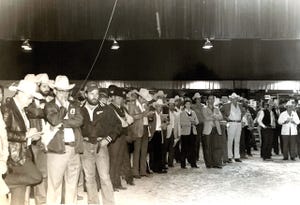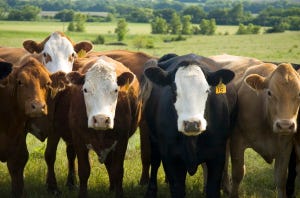Would creep feeding pay this year?
Lightweight calves keep showing positive value of gain, but cost of gain could offset it or the markets could change.
June 21, 2019

It is the time of year some may consider feeding creep. So I’m going to take a quick look at this practice.
Keep in mind that it is your operation, and therefore you must know your cattle and your numbers before making a management decision.
All I know is what the market is telling me right now. No one can forecast the future. To try and do so is gambling, commonly called "betting on the come." As I look at market prices paid for cattle this week, the value of gain remains highest among cattle are weighing under 600 pounds. Creep feeding these lighter-weight calves may pay off since the value of gain offsets the price of the creep. When I priced some creep feed this week I was shocked at how expensive it was. When I ran the numbers on it the math told me that one could pick up an extra $20 per head on the lightweights.
The rub is when the cattle begin to weigh over 600 pounds the added expense could end up pushing a producer $60 per head into the red. There is a very fine tipping point between picking up a few dollars and giving your feed away. You must know what the calves weigh, and I’ll caution you that you can’t guess it that close to avoid the tipping point.
If you are in the business of selling cattle it’s your job to know these two things:
1. What your costs are
2. How the markets work
I see misleading math in bull-sale catalogs and feed-salesman pitches all the time. They tell you a feeder calf is worth, let’s say $1.50 per pound. And if you feed this creep to your calves and they gain this many extra pounds multiplied by a $1.50 you will make this much extra cash. First off they don’t back out the expense of the feed and second they don’t calculate the heavier weight using the price slide. The other thing to consider, and that no one will tell you, is the discount you may be faced with. Calves that come off good-milking mommas and that had creep may end up in a greasy condition. A buyer’s first thought will be that he’s going to buy weight that will melt off during the weaning process, and therefore he will discount them. That discount could erode away any profit potential you may have had. So know what your cattle weigh, what your costs are and keep a close eye on the value of gain.
It's hard to believe with all the rain that anyone could be short on grass. The thing is, the weather has not been favorable to grass growth and as a result we continue to see an unseasonable run of pairs and bred cows. If the cow is 8 years old or younger the pair sells well. Some young pairs this week brought over $1,900.
Bred cows are a right-place-right-time scenario. At one auction fall-bred cows were just over weigh-up price. The next day at an auction just down the road they brought $400 a head more than weigh-up price.
I already mentioned that the highest value of gain was in cattle weighing under 600 pounds. Looking at market reports from all over the country at cattle weighing over 600 pounds, it is easy to find a lighter one that brought more dollars per head than a heavier one. This is one of two things: a form of paying someone to take your feed, or a good buying opportunity. It all depends on which side of the transaction you are on.
Unweaned cattle were $5-$10 back. Thin-fleshed cattle fetched a $5-$10 premium. Feeder bulls were $5-$20 back. Fleshy cattle were $10 back, so if you decide to creep feed, be sure to keep an eye on their body condition.
You May Also Like
.png?width=300&auto=webp&quality=80&disable=upscale)


